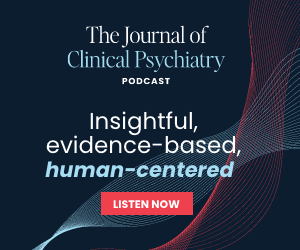Treating bipolar disorder in pediatric patients is challenging because data from rigorous trials of pharmacotherapy in this population are still not plentiful enough. Furthermore, the treatment of children and adolescents is complicated by the frequent need to combine pharmacotherapies to address all bipolar symptoms as well as this population’s elevated risk for experiencing side effects. Additionally, young patients with depressive episodes who are at high risk for developing bipolar disorder need careful treatment to prevent or delay the emergence of mania. Despite these challenges, clinicians should evaluate the existing pediatric literature, extrapolate evidence obtained from adult patients, and draw from clinical experience to guide treatment decisions for children and adolescents with bipolar disorder.
Supplement Article September 15, 2016
Pediatric Bipolar Disorder: Combination Pharmacotherapy, Adverse Effects, and Treatment of High-Risk Youth
J Clin Psychiatry 2016;77(suppl E1):e03
Article Abstract
Vol 86 • 2025 • Number 3
Read the Current Issue
Original Research
Postpartum Distress in Women With and Without ADHD
Academic Highlights
Clinical Application of Aripiprazole Monohydrate Long-Acting Injectables for the Treatment of Schizophrenia: A Consensus Panel Report
Academic Highlights
Clinical Application of Aripiprazole Monohydrate Long-Acting Injectables for the Treatment of Bipolar Type I Disorder: A Consensus Panel Report
In Memoriam
In Memoriam: Terence A. Ketter, MD
Narrative Review
Idiopathic Hypersomnia: Recognition and Management in Psychiatric Practice
Original Research


